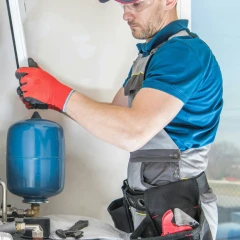












If you live in a region with cold winters, properly winterizing your boat isn’t optional — it’s essential for preventing costly damage and protecting your investment. Freezing temperatures, moisture buildup, and long periods of inactivity can all take a toll on your engine, hull, and onboard systems.
Whether you’re storing your boat in the water, on land, or in a heated garage, here are 15 must-follow tips to get your boat ready for winter.
Flush your engine with fresh water to remove salt, dirt, and debris. After flushing, drain any remaining water to prevent freezing and cracking.
Fill your fuel tank about 90% full and add a fuel stabilizer. This prevents condensation and keeps the fuel from breaking down during storage.
Fogging oil protects internal engine components from corrosion. Spray it into the carburetor or through spark plug holes while the engine is running (check your owner’s manual for instructions).
Dirty oil contains moisture and contaminants that can cause corrosion. Always replace the oil and filters before long-term storage.
If your engine is water-cooled, drain the coolant and replace it with antifreeze designed for marine engines.
Remove the battery, clean the terminals, and store it in a dry place. Consider trickle charging it periodically to maintain battery health.
Clean the bilge and add a little antifreeze to prevent any water from freezing. Make sure the bilge pump and float switch are working if storing in water. If keeping your boat in the water where freezing may occur, add a de-icer or bubbler to your pier.
Drain and flush all freshwater tanks, sinks, and showers. Add marine-grade antifreeze to prevent freeze damage in the plumbing system.
Pump out holding tanks and flush the system with antifreeze. Skip this and you risk frozen pipes and cracked seals.
Take out any removable electronics, safety gear, fishing equipment, or personal items. Store them in a dry, secure location.
Wash and dry the boat thoroughly, removing algae, salt, and grime. Apply a coat of wax to protect the hull and paint during storage.
Use covers or vented plugs to seal exhaust ports, intake vents, and other openings that critters or moisture might enter.
Invest in a fitted, breathable boat cover or shrink wrap. This protects your boat from snow, UV damage, leaves, and debris.
Grease the steering system, throttle, cables, and any exposed metal hardware. Lubrication prevents rust and seizing during downtime.
Make sure your boat insurance includes winter lay-up protection or storage coverage. If you’re not sure, speak to your insurance agent before storing the boat.
Winterizing your boat takes a little effort now, but it can save you from expensive repairs, insurance complications, or even total loss later. If you’re unsure about any steps, it’s always smart to consult your boat manual or hire a professional winterization service.
